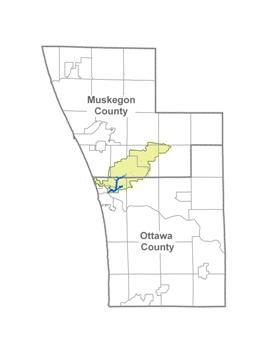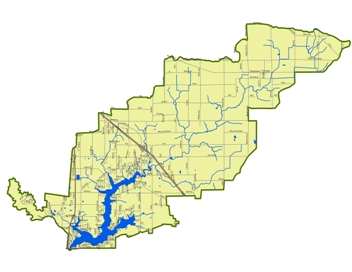Rein in the Runoff: Stormwater Integrated Assessment in Spring Lake - Introduction
Introduction | Description | Stakeholders | Products | Stormwater Education | Contacts


Researchers at AWRI have received funding from Michigan Sea Grant to identify the causes, consequences, and corrective actions required to minimize the adverse impacts of stormwater discharges to the water bodies located within and around the Village of Spring Lake and Spring Lake Township, including Spring Lake, the Grand River, and, ultimately, Lake Michigan. An Integrated Assessment approach is being used to synthesize existing natural and social scientific information dealing with the best management practices for stormwater management. This approach includes the involvement of policy-makers in these two municipalities and other interested parties throughout the watershed. A trans-disciplinary team, which includes experts from AWRI, Michigan Sea Grant Extension, Environmental Consulting & Technology, Inc. (ECT), and GVSU's Seidman College of Business and the School of Communications, has been formed to address the stormwater issue.

Stormwater management is a major issue for municipalities. As increasing amounts of natural land are converted to impervious surfaces, water that was once largely absorbed by the soil or transpired by vegetation is now conveyed from these hard surfaces by storm drains, pipes, and canals to nearby surface waters. This stormwater runoff increases both pollutant loads and water temperatures, which have adverse impacts on water quality and negative effects on fish and aquatic insects, respectively. The greater water volume can result in an unstable system with higher flows, more streambed and bank erosion, and flooding downstream.
Spring Lake Township and the Village of Spring Lake are located in West Michigan, nestled between Spring Lake and the Grand River, just a few miles upstream of Lake Michigan. These municipalities are located in one of the fastest-growing regions in the upper Midwest. Spring Lake and the Grand River are already impacted by high levels of phosphorus and potentially-toxic cyanobacteria blooms, and the nearshore areas of Lake Michigan are showing signs of impairment from nonpoint source pollution. An integrated approach is needed to deal with stormwater issues in these areas given their intimate connections to a number of economically and recreationally important aquatic systems.
The project team is working with local stakeholders to accomplish the following project goals:
- Increase Spring Lake area residents' and decision-makers' general knowledge and understanding of the causes and consequences of stormwater runoff, and how they apply specifically to Spring Lake, the Grand River, and Lake Michigan
- Increase stakeholder stewardship of the water resources surrounding Spring Lake Township and the Village of Spring Lake, and in particular, increase participation in stormwater control and management
- Identify inconsistencies between state regulations and/or local ordinances that can improve local stormwater management and control
- Provide a suite of alternative stormwater management Best Management Practices (BMPs) tailored to Spring Lake Township and the Village of Spring Lake
Funded by:


